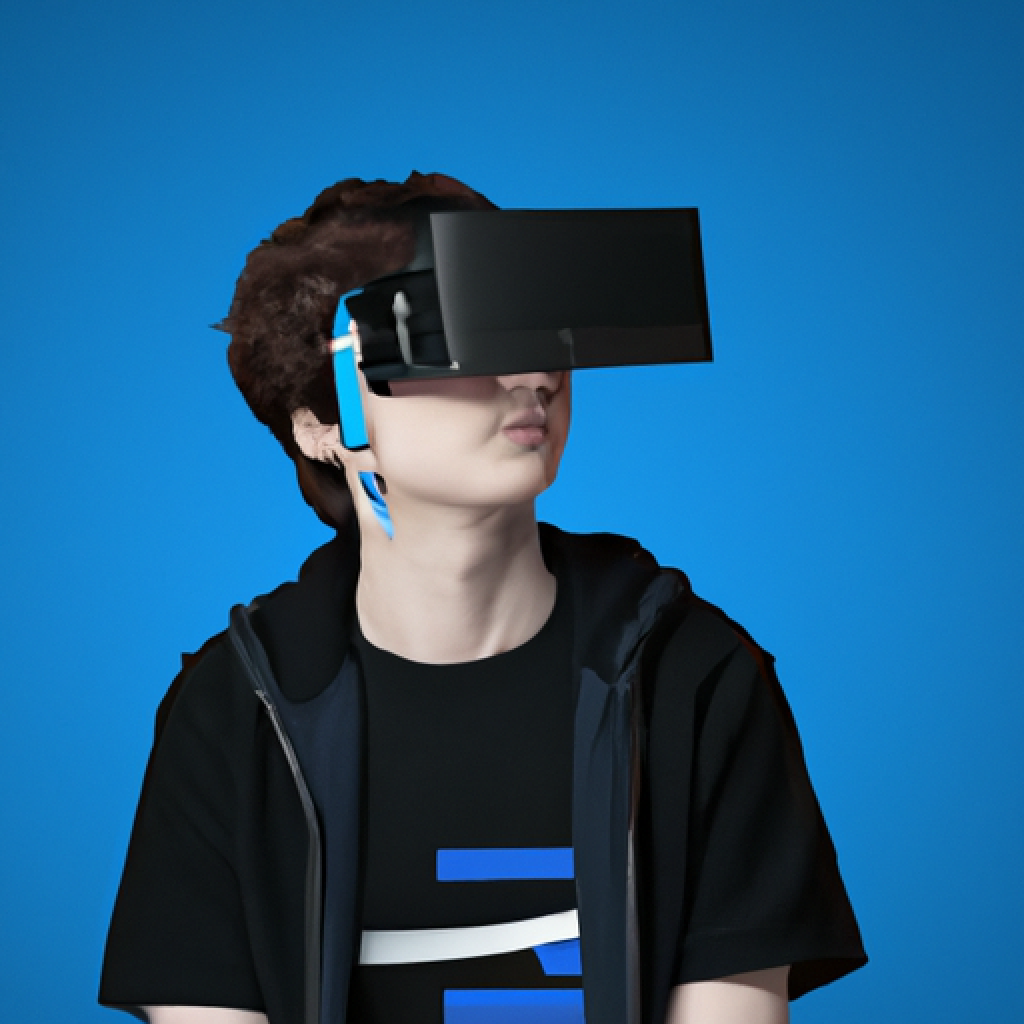What Is The Biggest Problem With VR?

So, let’s talk about Virtual Reality, or VR as many people like to call it. Ever since its inception, VR has been touted as the future of immersive entertainment, promising to transport us to incredible virtual worlds and revolutionize the way we experience games, movies, and even social interactions. But, as amazing as it sounds, there’s a catch – the biggest problem with VR. And no, it’s not the bulky headsets or the motion sickness some people experience. It’s something far more fundamental and, dare I say, philosophical. Let’s dive in and explore what really is the biggest problem with VR.
High Cost of VR Equipment
Initial purchase cost
One of the biggest challenges with VR is the high cost of the equipment. Purchasing a VR headset and the necessary accessories can be quite expensive. The prices of high-quality VR headsets can range from several hundred dollars to even thousands of dollars, depending on the brand and features. For many consumers, this initial cost can be a significant barrier to entry, preventing them from experiencing the wonders of virtual reality.
Hardware maintenance expenses
In addition to the initial purchase cost, VR equipment also comes with ongoing maintenance expenses. Like any electronic device, VR headsets may require firmware updates, repairs, or replacements over time. These expenses can quickly add up and become a burden for users, especially if they are on a tight budget. Moreover, finding reliable repair services for VR equipment might be a challenge in some areas, increasing the frustration and cost for users.
Requirement for upgrades to keep abreast with developing technology
Another financial hurdle that VR enthusiasts face is the need for regular upgrades to keep pace with developing technology. Virtual reality is a rapidly evolving field, with new advancements and hardware improvements being introduced frequently. This means that as new headsets and accessories hit the market, users can feel the pressure to upgrade their equipment to enjoy the latest features and advancements. Upgrading VR components can be costly, making it difficult for users to stay up to date with the rapidly changing technology.
Limited User Base
High cost leading to limited adoption
The high cost of VR equipment directly contributes to the limited adoption of virtual reality technology. Many potential users are deterred by the expensive price tags associated with VR headsets, and therefore, choose not to invest in this immersive technology. As a result, the user base for VR remains relatively small, restricting its potential for widespread use across various industries and applications.
Limited use in commercial environments
While there are numerous exciting possibilities for VR in various commercial fields, its limited adoption hampers its potential use. Due to the significant cost of VR equipment, many businesses are reluctant to invest in the technology, especially if they are unsure of its long-term benefits or profitability. As a result, the application of VR in commercial environments, such as architectural visualization, virtual tours, or employee training, is limited, hindering its progression and potential for growth.
Inaccessibility for people in developing countries
Virtual reality is a technology that has the potential to enhance education, entertainment, and various industries. However, one of the biggest challenges that VR faces is its inaccessibility to people in developing countries. The high cost of VR equipment, coupled with the need for powerful computers and internet connection, makes it difficult for individuals in these regions to experience the benefits of virtual reality. This creates a significant divide, limiting the opportunities for individuals in developing countries to access and engage with VR content.

Need for Robust Hardware
High system requirements
To experience the full potential of virtual reality, users must meet specific system requirements to ensure smooth and immersive gameplay. VR demands powerful hardware, including a capable computer or gaming console with high processing power, RAM, and storage capacity. These system requirements are not met by the average household PCs, requiring users to invest in expensive hardware upgrades or purchase entirely new systems, adding to the overall cost and complexity of adopting VR.
Requirement for specialized graphics cards
A crucial piece of hardware for a seamless VR experience is a specialized graphics card. VR applications and games require high frame rates and detailed graphics to create an immersive world. Ordinary graphics cards found in most household PCs often fall short in meeting these demands, resulting in a subpar VR experience. To overcome this limitation, users are forced to purchase expensive graphics cards optimized for VR, further increasing the financial constraints of adopting virtual reality technology.
Incompatibility with common household PCs
Another challenge related to hardware is the incompatibility of VR headsets with common household PCs. Many VR headsets require specific connections, such as HDMI or USB-C ports, which may not be available on older PC models. This incompatibility forces users to invest in additional adapters or upgrade their entire computer system to enjoy VR content fully. This creates a barrier for the average user who may not be willing or able to spend additional money on new hardware or adaptors.
Physical Discomfort and Health Concerns
Simulation sickness
One of the most commonly reported issues with VR is simulation sickness, also known as cybersickness or VR motion sickness. This phenomenon occurs when users experience nausea, dizziness, or discomfort as a result of the sensory disconnect between their visual perception and physical movements. The discrepancy between what users perceive in the virtual world and what their bodies feel in the real world can lead to feelings of unease and discomfort, limiting the amount of time individuals can spend in VR or even preventing some from enjoying the experience altogether.
Risk of physical injuries
Engaging in VR experiences can also pose risks of physical injuries. When immersed in a virtual environment, users may forget their surroundings, potentially leading to collisions with objects or tripping over obstacles in their physical environment. Sweating, gripping VR controllers tightly, or erratic movements can also increase the likelihood of accidents or injuries while wearing a VR headset. These physical risks and injuries associated with VR can deter users from fully embracing the technology.
Long-term effects on eye health
Spending prolonged periods in virtual reality may have long-term effects on eye health. Constantly focusing on screens located just inches away from the eyes and at high resolutions can strain the eyes and contribute to eye fatigue. Although studies on the long-term effects of VR on eye health are still limited, excessive use of virtual reality could potentially lead to conditions such as eye strain, dry eyes, or even myopia. As the popularity of VR increases, it becomes crucial to understand and address the potential impacts on eye health for the well-being of users.

Psychological Impacts of VR
Isolation from the real world
Virtual reality has the potential to transport users to immersive worlds and experiences, but it also has the ability to isolate individuals from the real world. Spending extended periods in VR can lead to a disconnection from one’s physical surroundings and real-life social interactions. This isolation may have consequences for individuals’ mental well-being, potentially leading to feelings of loneliness or detachment from reality.
Blur between reality and virtual reality
Another psychological concern associated with VR is the potential for a blurred line between reality and virtual reality. In some intense VR experiences, users may struggle to differentiate between what is happening in the virtual world and what is happening in their physical environment. This blurring of boundaries can create confusion, anxiety, or even fear, especially in situations where users may encounter realistic and immersive virtual scenarios.
Potential for addictive behaviors
The highly immersive nature of VR experiences can also pose potential risks for addiction. Engaging in VR can be so captivating and enthralling that some individuals may find it difficult to limit or control their usage. Spending excessive amounts of time in virtual reality, neglecting real-life responsibilities or relationships, or experiencing distress when not engaged in VR activities are all signs that virtual reality might be contributing to addictive behaviors. It’s important for users to be mindful of their usage and establish healthy boundaries when engaging with VR technology.
Lack of Quality Content
Limitation of VR games
While virtual reality offers unique and immersive gaming experiences, there is still a limitation in the quantity and quality of VR games available. Compared to traditional gaming platforms, the number of VR games is comparatively smaller. Many developers perceive VR games as a risky investment due to the limited user base and potential high development costs. This results in a lack of diversity in game genres, choices, and overall quality, leaving users with a limited selection of VR games.
Shortage of non-gaming VR applications
Beyond gaming, the shortage of non-gaming VR applications is another concern. While there are some impressive applications in fields like education, healthcare, and simulations, the range and availability are still relatively limited. Some industries could greatly benefit from VR, such as architectural visualization, virtual tourism, or training simulations, but the lack of investment and development in non-gaming VR content prevents the technology from reaching its full potential in these areas.
Lack of development investment in VR content
The limited availability and quality of VR content can be attributed to the lack of sufficient development investment in this field. Developers often face challenges in funding, as VR projects can require significant time, resources, and expertise to create compelling content. The uncertainties surrounding the profitability and market demand for VR content deter developers from exploring the full potential of virtual reality. Without adequate investment in VR content creation, the growth and development of the technology may be hampered.

Lack of Social Interaction
VR as a solitary experience
Virtual reality is often seen as a solitary experience, where users are immersed in their own virtual worlds without the presence of others. While this isolation can provide a sense of privacy and personal immersion, it also limits the opportunities for social interaction and collaboration. The absence of real-time interactions with others can detract from the social aspect of gaming or limit virtual experiences that thrive on shared experiences and connections.
Lack of physical connectivity with people
Furthermore, virtual reality lacks physical connectivity with others. While online multiplayer experiences allow users to interact with friends or strangers from around the world, the absence of physicality can create a sense of detachment and reduce the depth of human connection. Physical touch, non-verbal communication, and the sense of presence that comes with face-to-face interactions cannot be fully replicated in virtual reality, limiting the overall social experience for users.
Limitation of multi-user experiences in VR
Although there are some multiplayer experiences in virtual reality, the limitations of multi-user experiences remain. Shared virtual environments often come with technical challenges, such as connectivity issues, limited player capacity, or the need for extensive hardware resources. These limitations hinder the ability to have seamless and robust multi-user experiences in VR, preventing the technology from fully capitalizing on its potential for collaborative virtual environments.
Difficulty of Use
User complexity
Virtual reality can be complex to set up and use, requiring users to go through various installation processes, including calibrating the VR system, setting up tracking sensors, and configuring software. This complexity can be daunting for non-tech-savvy individuals or those who are unfamiliar with VR technology. The intricate nature of the setup can discourage potential users from exploring and embracing virtual reality.
Learning curve required
In addition to the initial setup, there is often a learning curve associated with using VR. Users must become familiar with the interface, controllers, and different navigation methods specific to each VR application or game. This learning curve may deter some individuals who prefer a more intuitive and seamless user experience. Without intuitive and user-friendly interfaces, the accessibility and usability of virtual reality remain limited.
Inconvenience in usage
The inconvenience of using VR equipment can also hinder adoption and usage. VR headsets can be bulky, heavy, and uncomfortable to wear for extended periods, impacting the overall user experience. Additionally, setting up the VR system in a spacious and dedicated area, managing cables, and ensuring proper lighting conditions can be a logistical challenge for some users. The inconvenience associated with using VR equipment means that users may opt for more accessible and convenient forms of entertainment or technology.

Technological Challenges
Achieving realistic user movement
Creating realistic user movement in virtual reality can be a significant challenge. While headsets can track the rotational movement of the user’s head relatively accurately, accurately tracking full-body movements and natural locomotion is more complicated. Immersive and natural movement in VR requires advanced tracking technologies, such as motion capture or full-body tracking systems, which are still expensive and not widely accessible. The inability to achieve realistic user movement may limit the immersion and overall quality of virtual reality experiences.
Latency issues
Latency, or the delay between a user’s movement and the corresponding response in the virtual world, can be a considerable challenge in virtual reality. Even a slight delay between a user’s action and the corresponding visual feedback can break the sense of presence and immersion. Achieving low latency in VR applications requires advanced hardware, optimized software, and stable connections, which can be difficult to achieve consistently for all users. The presence of latency issues hampers the overall quality and real-time responsiveness of VR experiences.
Lack of haptic feedback
Haptic feedback, including tactile sensations and force feedback, plays a vital role in enriching VR experiences and making them more immersive. However, the current VR technology still struggles to provide convincing or realistic haptic feedback to users. While there have been advancements in haptic gloves, controllers, and vests, achieving a wide range of textures, forces, or physical interactions continues to be a technological challenge. The absence of comprehensive haptic feedback limits the realism and sensory experience that virtual reality can offer.
Legal and Privacy Issues
Potential for invasion of privacy
Virtual reality presents unique challenges when it comes to privacy concerns. VR headsets often require access to personal data, such as demographic information, movement data, or even biometric data. The potential for invasion of privacy arises when users are not fully aware of how their personal information is being collected, stored, or utilized by VR developers or third parties. Additionally, the integration of social features in VR experiences raises concerns about data sharing, surveillance, and unintentional recording. Striking the balance between immersive experiences and safeguarding user privacy remains a critical challenge for the VR industry.
Liability issues in VR
Engaging in virtual reality experiences carries potential liability concerns. Accidents or injuries that occur while using VR equipment, especially in public or commercial settings, can raise questions of responsibility and liability. Determining who should be held accountable for any physical harm or property damage caused during VR experiences can be a legal challenge. Clear guidelines, regulations, and standards are necessary to establish a framework for allocating responsibility and ensuring user safety in virtual reality.
Regulation of virtual currency
As virtual reality platforms incorporate virtual economies and virtual currencies, the issue of regulation becomes a concern. The use of virtual currency in VR environments raises questions about financial transactions, fraud prevention, and money laundering. With the potential for real money to be exchanged within virtual reality, ensuring the security and integrity of virtual transactions is crucial. The lack of clear regulations and guidelines surrounding virtual currency in VR creates a legal challenge that needs to be addressed to mitigate potential risks and protect users’ financial interests.








